It’s not the first time I have pondered the name of my Substack publication… not so much the inclusion of my actual name but more the ‘Art’ tag. After all there is precious little art going on around here, certainly of the painting or drawing variety. To be fair the past nine months haven’t been the easiest and they have been filled with an overload of family preoccupations so I’m trying to cut myself some slack, but that self-doubt still lurks. Can one be an artist if one isn’t making art? You don’t have to answer that. But there is a shift happening; I have attended a brilliant workshop this week which I hope is going kickstart some paintings, which is just as well as I have signed up to participate in Open Studios once again this summer. But even when I’m not making art I do still enjoy looking at art and discovering the work of others so this week I thought I would share some fabulous paintings that have inspired me recently.
On our recent trip to Bath, on our last morning we visited the Holburne Museum of Art, Bath’s first public art gallery which is situated iat the entrance to the Sydney Pleasure Gardens. The building, which was the former Sydney hotel is home to some fabulous fine and decorative art which has been built upon the collection of Sir William Holburne (1793 – 1874). The hotel was originally built to serve the Pleasure Gardens and visitors would enter the gardens through the hotel, maybe partaking of one of the public breakfasts which would include Sally Lunn Buns, which would invariably be followed by dancing. But by 1836 the hotel became a private lodging house. In 1916 the house became home to the Holburne collection of paintings and objects which Sir William had bequeathed to the city of bath. The house was extended and refurbished earlier this century and eventually it reopened to the public in 2011.
Sir Thomas William Holburne, 5th Baronet of Menstrie
Sir William Holburne was the fifth baronet of Menstrie, a Scottish village. He served as a Lieutenant in the British Navy having joined in 1805, aged just eleven. He fought at the Battle of Trafalgar and looked destined to have a naval career, but following the death of his elder brother he inherited the family title and a modest fortune. As a result he was pensioned from the navy and he embarked upon a Grand Tour of post Napoleonic Europe, visiting France, Italy, the Alps, the Netherlands and Germany. Whilst travelling he developed a lifelong interest in art and an enthusiasm for collecting, especially sculpture, silver, porcelain and Dutch landscapes. He never married or had children and lived out his life in Bath with his three sisters. It was his lifelong wish that his art collection should be left to the city of Bath for everyone to enjoy, so after his death, in 1882 his sister gave over 4,000 objects to the city. Since then a further 9,000 items have been added to the collection, including many by some of the greatest eighteenth century artists.
But the Holburne museum is not only home to a magnificent permanent collection as it also hosts many special exhibitions and events throughout the year. Whilst we were visiting there were three different exhibitions all featuring portraits or figurative work, which of course is right up my street. I readily admit that I found all three way more interesting than the silver and porcelain collections. There was an exhibition of portraits by some of the biggest names in mid twentieth century art such as Andy Warhol, David Hockney and Francis Bacon, that examined the way artists have used photography as a source. One of my favourite paintings amongst those on display was by Pauline Boty but I will save that for another post. There was also a small collection of large tapestry weavings by American artist Diedrick Brackens, called Woven Stories. But by far my favourite was the exhibition by Joshua Donker, a young (he’s not yet thirty) Ghanian British painter who grew up in Bath and who would often visit the Holburne Museum with his family when he was growing up.
Joshua’s bio reads that he ‘uses his paintings as a tool to subvert monolithic portrayals of Black Identity through portraiture.’ Now I don’t know about you, but that sort of artist statement leaves me totally bewildered. I don’t even know what it means, other than maybe he’s challenging conventional Black Art but if that’s the case why not say so. I do think there is an awful lot of ‘art bollocks’ written today in an attempt to sound intelligent or meaningful when really all we want are interesting things to look at. Not necessarily pretty or beautiful paintings but something that speaks to us or tells us a story. It doesn’t need to be embellished with psychobabble.
Fortunately Joshua’s work is powerful stuff that speaks for itself. He uses portraiture to tell stories about family history, identity and feelings of belonging and estrangement over several generations. His work consists of almost photo realistic oil portraits of his family and friends, which on their own would be technically brilliant although not necessarily that interesting. Yet Joshua combines the paintings with layers of family photos, fabrics and belongings creating personal narratives. By combining image transfer printing with the painting he literally embeds the paintings with a history of layered visual references that feel like a conversation between the artist and sitter. Each painting invites you to look closer and the following were just a few of my favourites.
Sankofa, Oil paint, graphite and image transfer on canvas, 2024
In the painting Sankofa, we see Joshua’s father surveying the family’s land in Ghana, surrounded by memories of previous generations who have farmed the land. In the Twi language the title roughly translates as “go back and get it” referring to an Akan proverb “It is not taboo to go back for what you forgot or left behind”. It is about using past wisdom to inform our futures.
Reap What You Sow, Oil paint, graphite and image transfer on canvas, 2023
Reap What You Sow also features Joshua’s father walking through family farmland in Ghana. The underlying printed images are photos from the 1970s to the present day featuring images from his childhood, his upbringing in Africa, to life in the UK. In his hands are seed pods embedded with images of his parents. Joshua says:
“This painting represents the passing of time and changes within the family and the eternal presence of those who come before us. My father as a product of his parents and continuing to spread their lessons of love and wisdom.”
I Have More Souls Than One, Worlds Apart, Oil paint, graphite and image transfer on canvas, 2023
I Have More Souls Than One, Worlds Apart shows Joshua’s grandmother visiting Britain from Ghana for the first time, sitting chatting to her granddaughter Louise. However Louise looks directly at the viewer confused by the Akan Twi dialect that her grandmother is speaking in an attempt to communicate. There is a longing for connection between the pair yet also a sense of their disconnection.
Vic, New Roots, Oil paint, graphite and image transfer on canvas, 2024
Vic, New Roots shows Joshua’s cousin and is meant to be one of a pair with the following portrait of Joshua’s uncle. The uncle has successfully settled in America and his son, Vic grew up in Chicago. However, through his musical career Vic has sought to renew connections with his Ghanian heritage. Within the foliage of the background there are photographs of Vic’s childhood in America together with those of relatives in Ghana, including Joshua and Vic’s shared grandparents.
I Have More Souls Than One, The Professor, Oil paint, graphite and image transfer on canvas, 2023
I Have More Souls Than One, The Professor shows Joshua’s uncle who successfully moved from Ghana to settle in Chicago. His relaxed posed hints at his comfort in the city he now regards as home, yet he is surrounded by images of his past hidden withing the foliage showing the continued power of family ties.
There’s Some Movement, Some Pursuit Best Expressing Each of Us, Oil paint, graphite and image transfer on canvas, 2024
This final unfinished portrait of Joshua’s mother, There’s Some Movement, Some Pursuit Best Expressing Each of Us, shows the artist’s working process giving a glimpse at the techniques used. We can see the initial sketch of the portrait of Joshua’s mother seated and holding a family photo album. She is surrounded by photo transfer images, some appearing clearer than others which is an indication of their significance. This is further enhanced as Joshua paints over the background images obscuring some whilst others remain visible.
I love this idea of layering a painting over other images so there is a hidden history, and I will often use old paintings as a base layer when creating something new. Although I cannot confess there was any history or meaning other than using up an old canvas it was something I did in the portrait I made of Sinead O’Connor.
And although there is no evidence of the original painting in the finished version it still pleases me to know that it is there, although I doubt anyone else will ever discover it. I can’t exactly see anyone taking X-rays of my paintings in hundreds of years’ time somehow.
Just for fun…
I was thinking about the sort of ‘art bollocks’ statements that seem to permeate the art world, so I got AI to come up with one for me:
Through portraiture, I explore the poetry of the human presence capturing the quiet tension between inner life and outward gaze. Each image is a fragment of narrative, a visual conversation that invites intimacy, reflection and a deeper sense of connection
Or in other words, I like to paint pictures that tell stories!


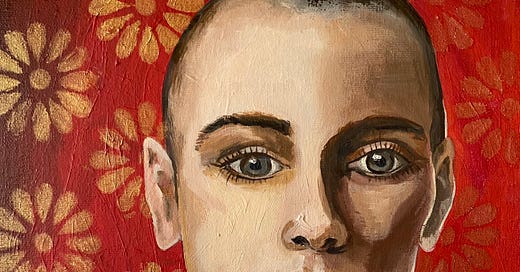



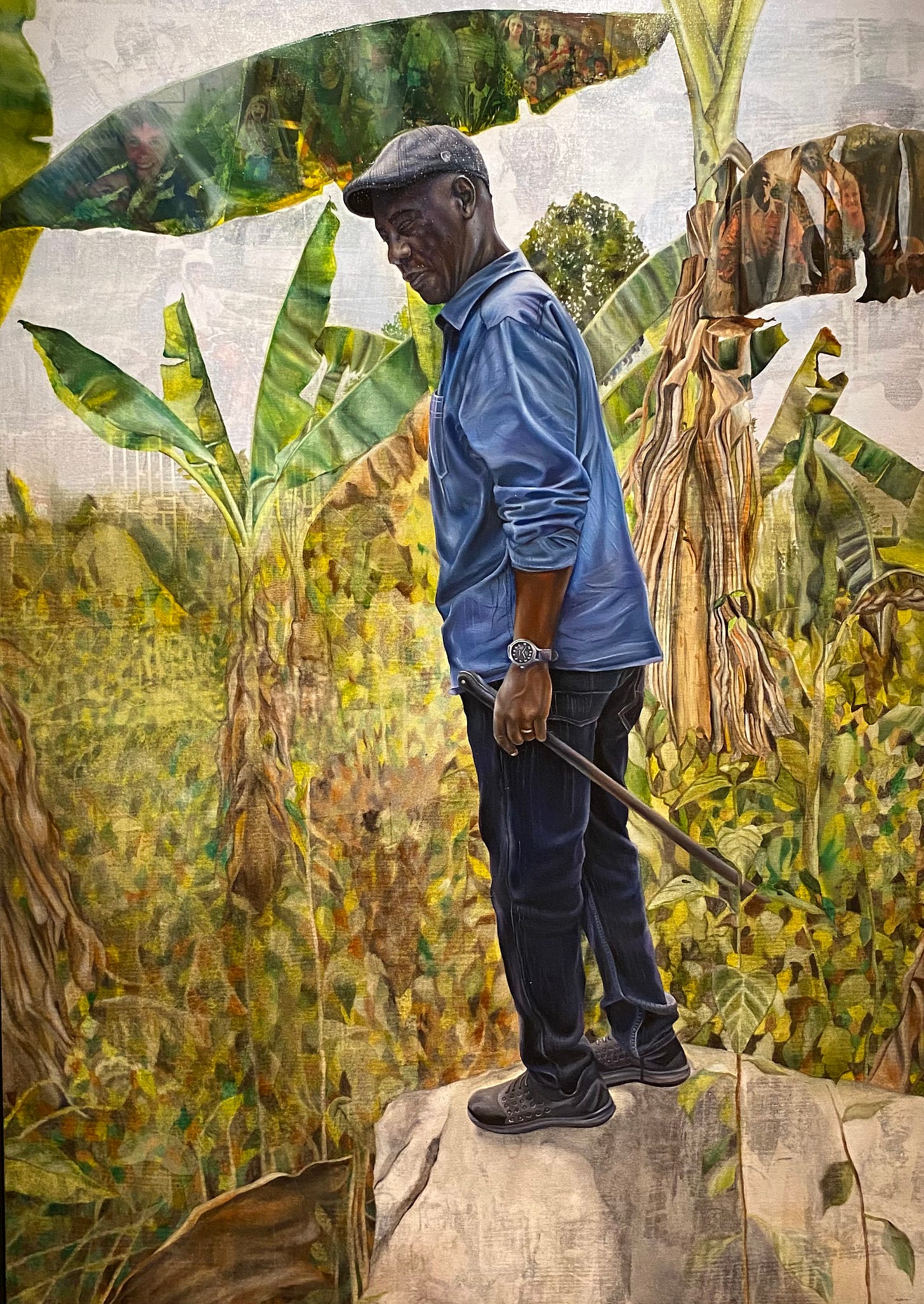
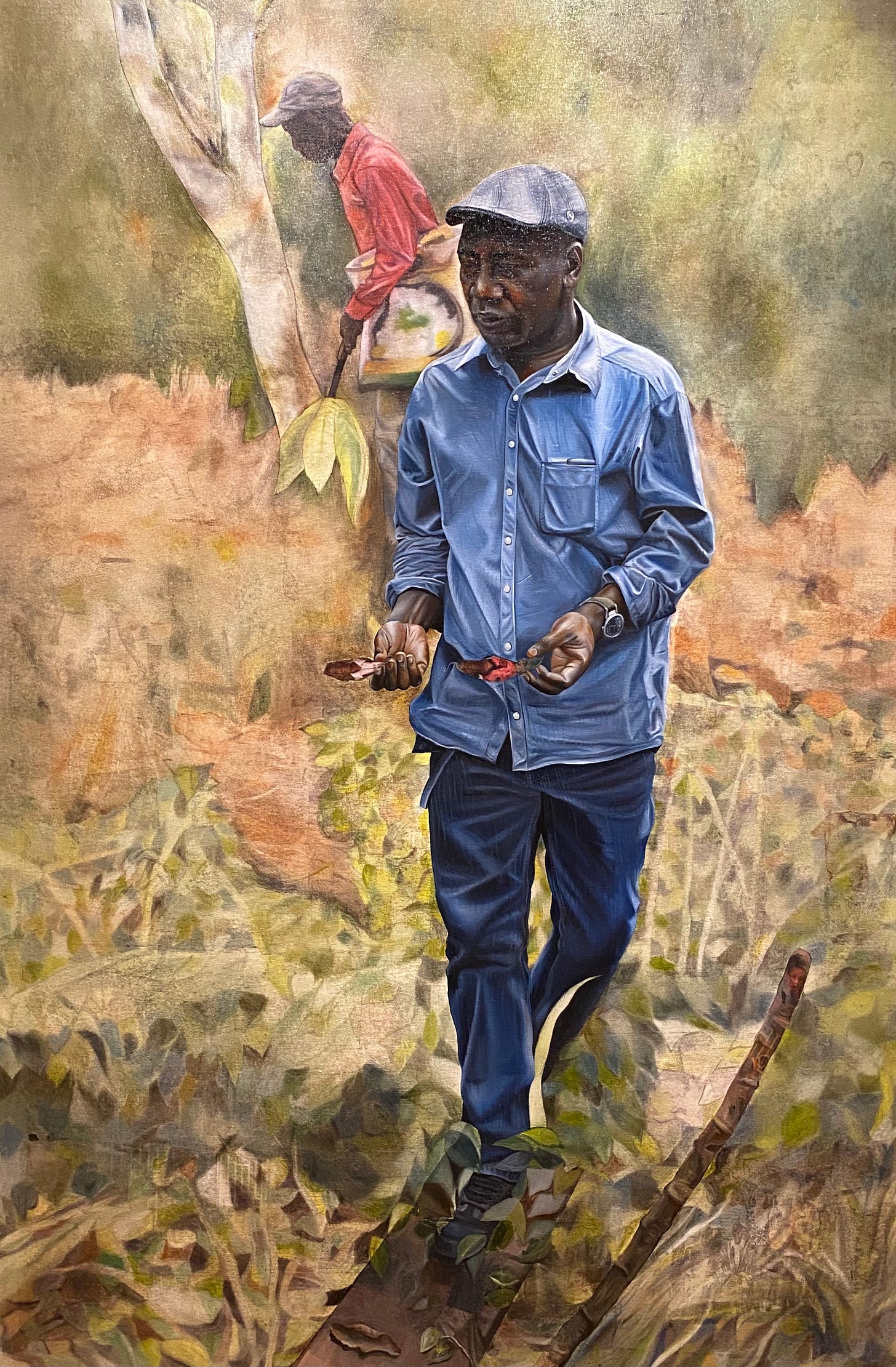
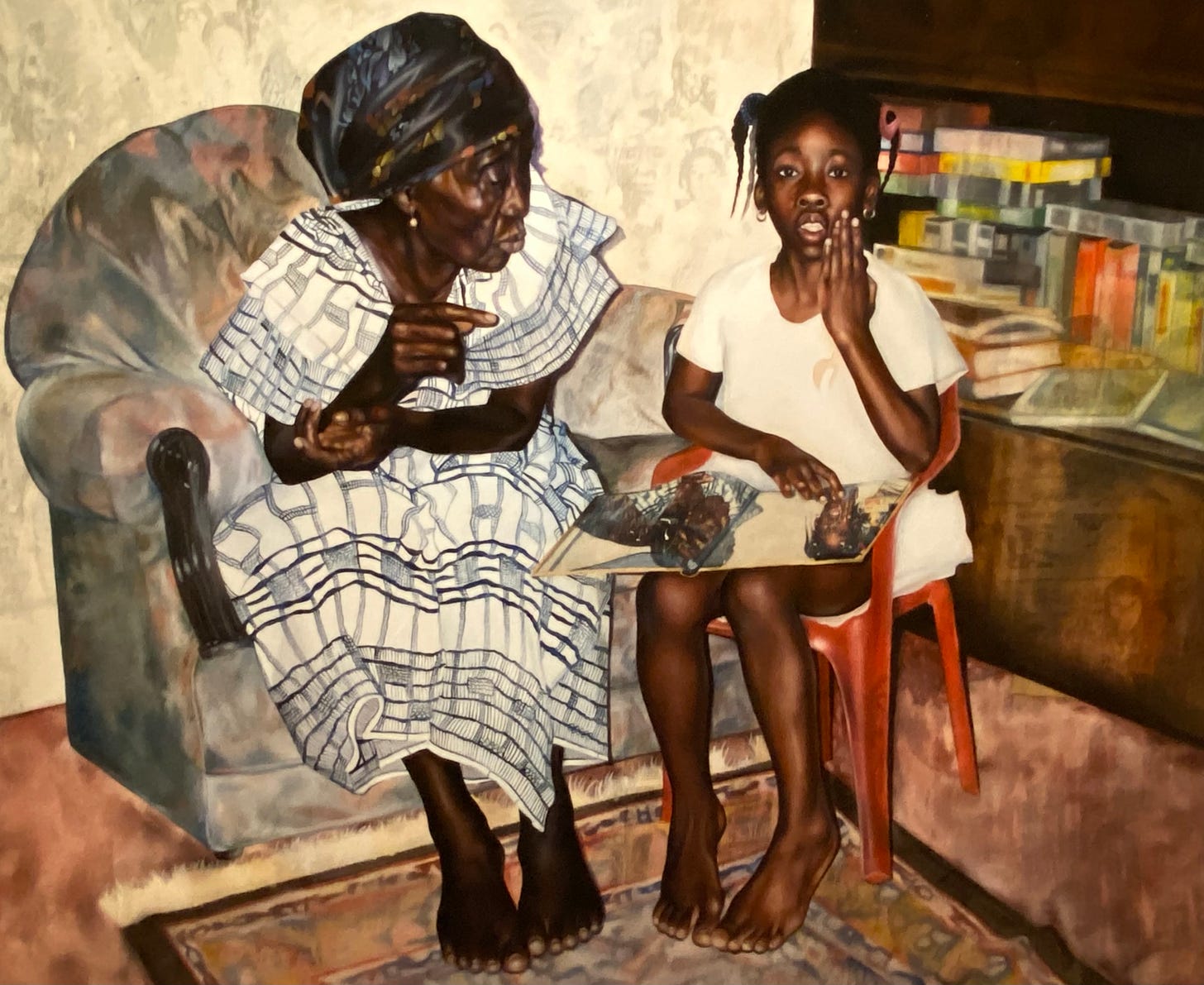
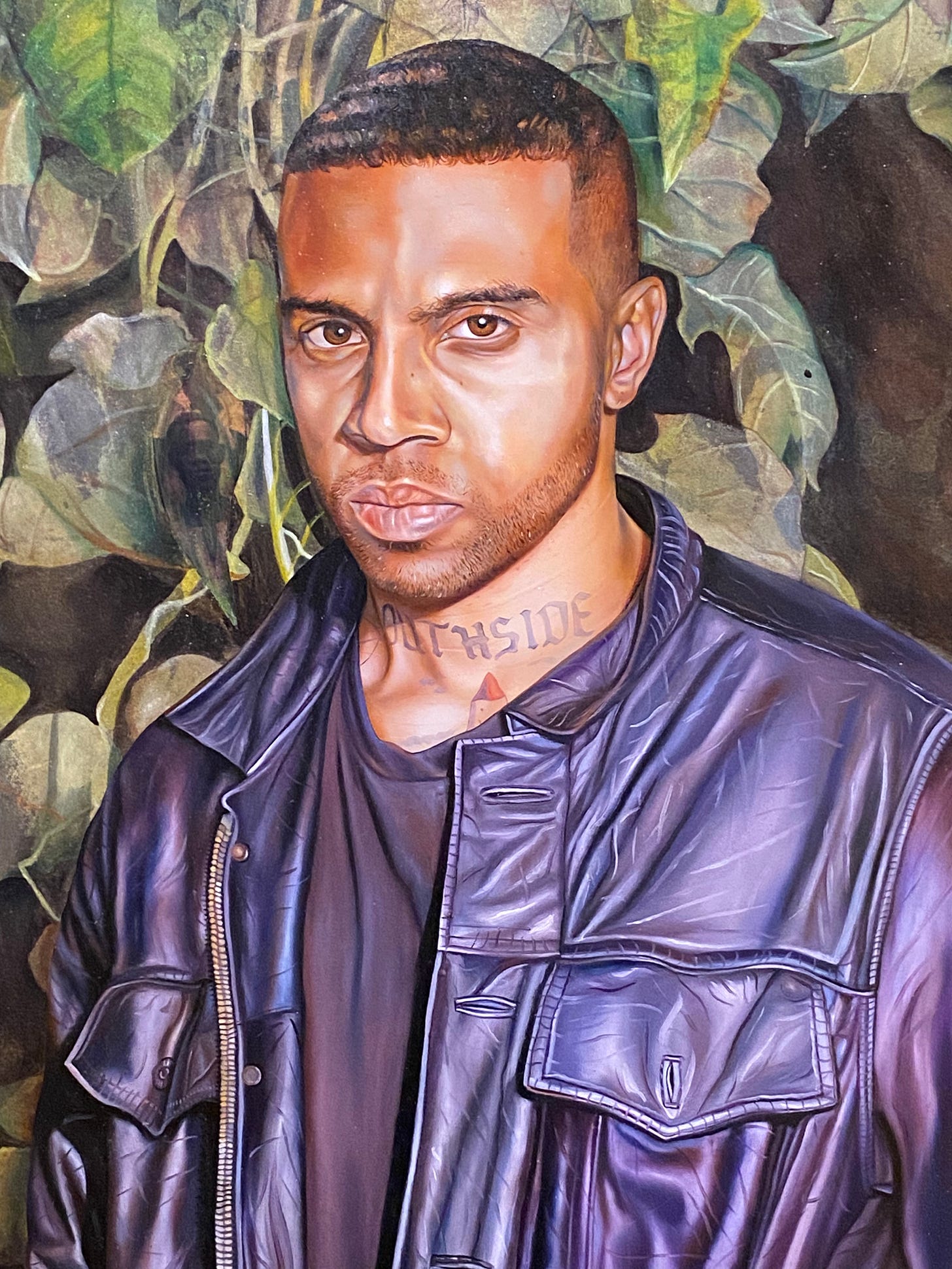
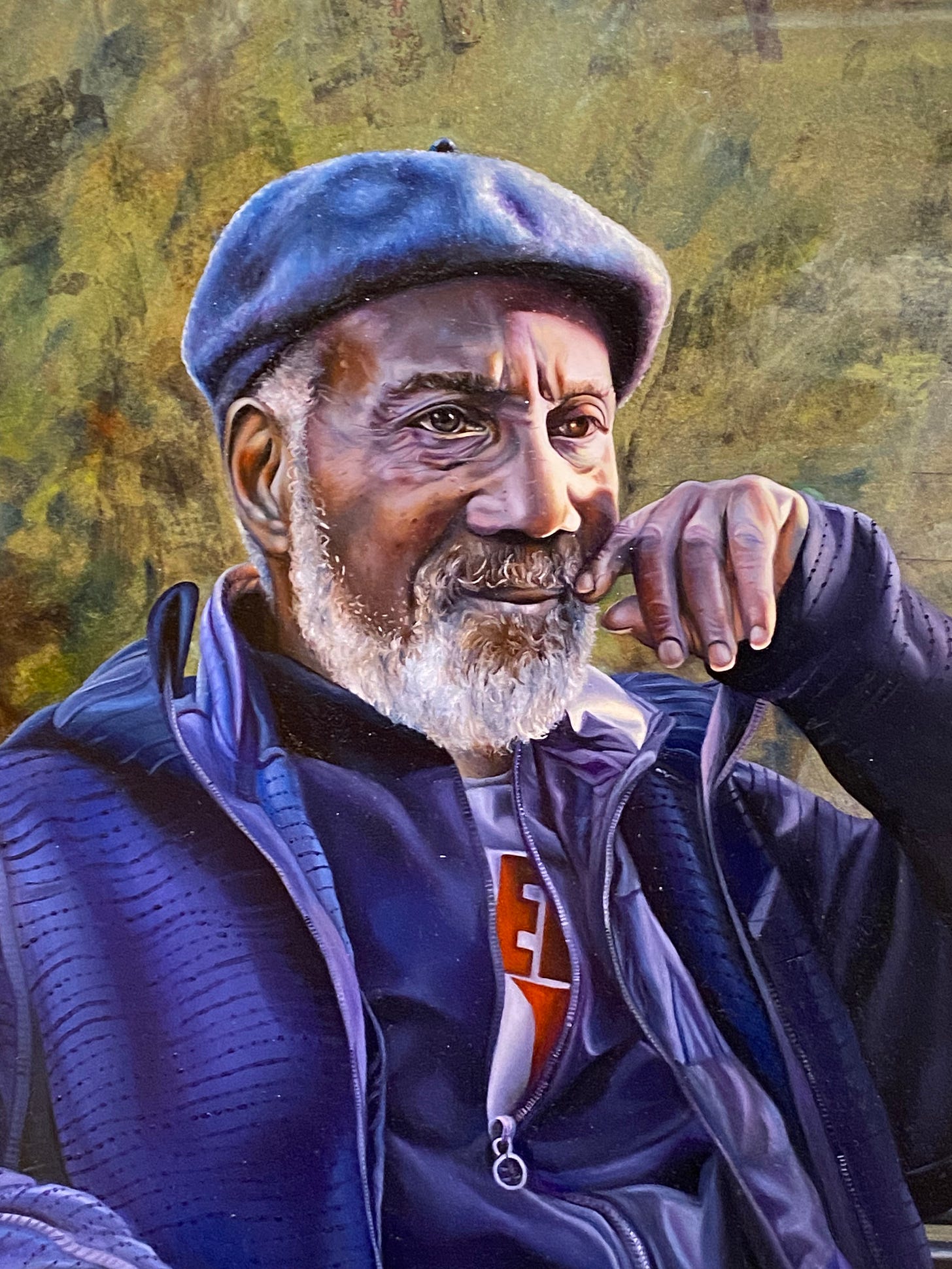
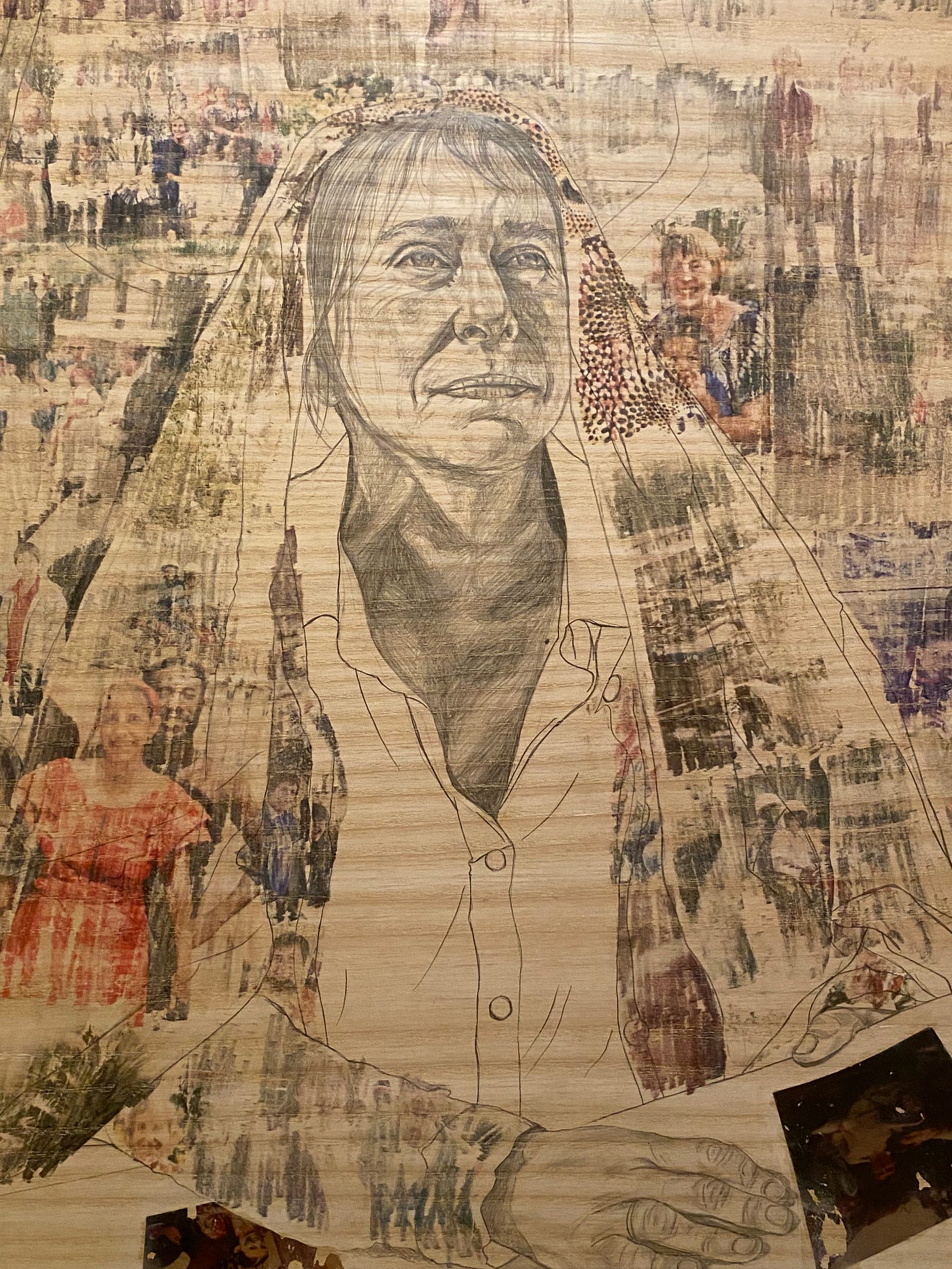
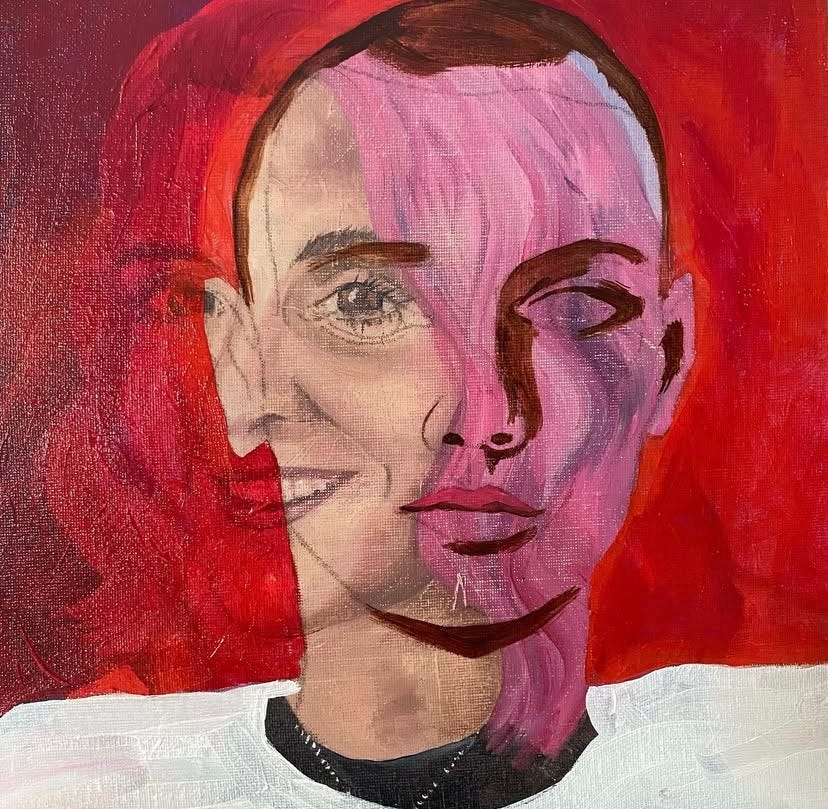
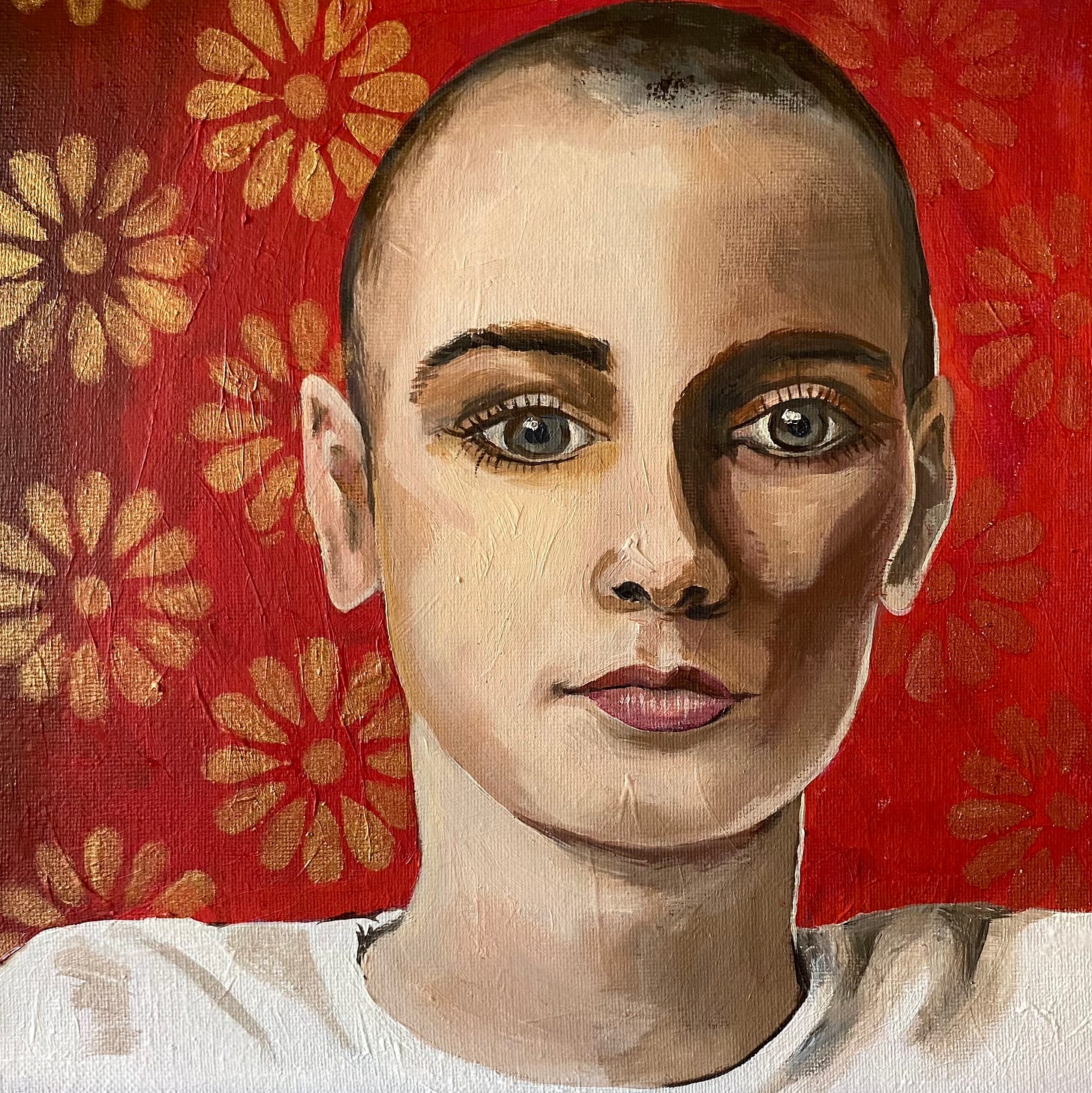

'Art Bollocks' is 'pretentious claptrap' to me and my arty friends!
What fabulous paintings by Joshua Donker. I c an see why you like them.